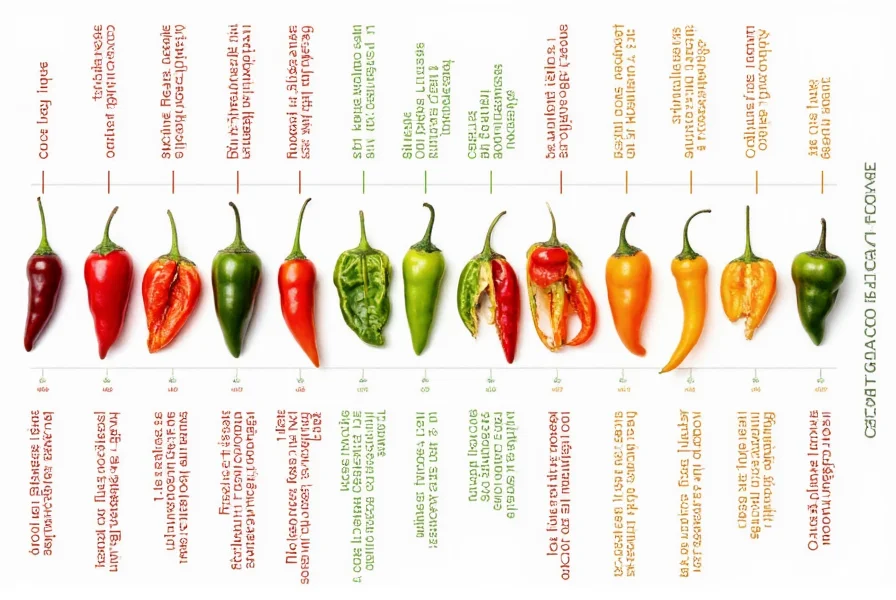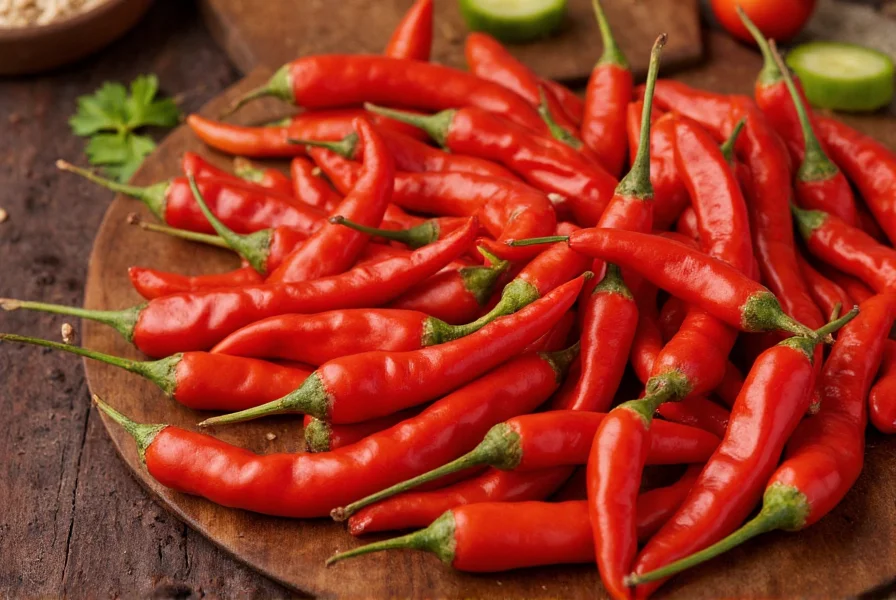Understanding chili varieties through visual identification is crucial for both culinary applications and gardening success. With over 30,000 known chili cultivars worldwide, accurate visual recognition helps prevent culinary mishaps and ensures proper handling of extremely hot varieties. This comprehensive visual guide provides detailed information about the most common chili types, their distinctive characteristics, and practical applications.
The Botanical Diversity of Chili Peppers
Chili peppers belong to the Capsicum genus, which includes five primary domesticated species. Each species contains numerous varieties that differ dramatically in appearance, heat level, and flavor profile. The visual characteristics of chilies change throughout their growth cycle, with most varieties starting green and maturing to vibrant reds, yellows, purples, or even chocolate brown hues.

Key Visual Characteristics for Identification
When examining chili images for identification purposes, focus on these critical visual elements:
| Identification Feature | What to Observe | Significance |
|---|---|---|
| Shape and Size | Length, width, curvature, and overall form | Primary differentiator between varieties (e.g., elongated cayenne vs. round peperoncini) |
| Color at Maturity | Final color when fully ripe | Indicates variety and sometimes heat level (though not always reliable) |
| Surface Texture | Smoothness, wrinkles, or distinctive patterns | Helps distinguish between similar varieties (e.g., wrinkled habanero vs. smoother Scotch bonnet) |
| Stem Attachment | How the stem connects to the fruit | Subtle but reliable identifier for certain varieties |
Common Chili Varieties and Their Visual Characteristics
Understanding the visual differences between popular chili varieties prevents culinary errors and enhances cooking precision. Here's a visual reference guide to help identify common types:
Mild to Medium Heat Varieties (0-30,000 SHU)
- Bell Peppers: Blocky, thick-walled, available in multiple colors, zero heat
- Poblano: Large, dark green, heart-shaped, moderate thickness
- Anaheim: Long (6-7 inches), relatively smooth, dark green to red when mature
- Jalapeño: Medium size (2-3 inches), smooth skin, typically harvested green but turns red
Hot Varieties (30,000-100,000 SHU)
- Serrano: Smaller than jalapeño (1-3 inches), bright green to red, thin-walled
- Cayenne: Long (4-6 inches), slender, smooth, typically red when mature
- Tabasco: Small (1.5 inches), slender, grows upright on plant, turns red when mature
Extremely Hot Varieties (100,000+ SHU)
- Habanero: Lantern-shaped, thin walls, typically orange or red, distinctive floral aroma
- Scotch Bonnet: Similar to habanero but with a "bonnet" shape, often slightly hotter
- Ghost Pepper (Bhut Jolokia): Small, bumpy texture, often red or orange, distinctive pointed tail
- Carolina Reaper: Red when mature, distinctive stinger-like tail, extremely bumpy surface

Understanding Chili Heat Levels Through Visual Cues
While color alone isn't a reliable indicator of heat, certain visual characteristics correlate with higher capsaicin concentration. Smaller, thinner-walled chilies often pack more heat than larger, thicker-walled varieties. Wrinkled skin can indicate higher heat levels in some varieties, as the wrinkles form during the drying process which concentrates capsaicin.
Seasoned chili growers note that environmental stressors like limited water and nutrient availability can increase heat levels, sometimes visibly affecting the plant's appearance with smaller, more vibrant fruit. However, visual identification alone cannot precisely determine Scoville heat units—only laboratory testing provides accurate measurements.
Practical Applications of Chili Visual Identification
Accurate visual identification of chili varieties serves multiple practical purposes:
- Culinary precision: Selecting the right chili for specific dishes based on heat and flavor profiles
- Gardening success: Properly identifying plants to ensure correct care and harvesting times
- Food safety: Avoiding accidental consumption of extremely hot varieties by children or sensitive individuals
- Cultural appreciation: Understanding traditional uses of specific chilies in global cuisines
- Commercial applications: Ensuring proper labeling and marketing of chili products
Using Chili Images for Educational Purposes
Educators, chefs, and gardening experts increasingly rely on high-quality chili images to teach about pepper varieties. When creating or selecting chili reference images, prioritize:
- Multiple angles showing distinctive features
- Size comparisons with common objects (coins, fingers)
- Color accuracy across different maturity stages
- Clear differentiation between similar varieties
- Contextual images showing plants in growth environments
For serious chili enthusiasts, maintaining a personal visual reference library with properly labeled images can significantly enhance identification skills over time. Digital tools now allow for side-by-side comparisons of chili varieties, making visual identification more accessible than ever before.
Frequently Asked Questions
How can I accurately identify chili pepper varieties using images?
To accurately identify chili varieties using images, examine multiple visual characteristics including shape, size, color at maturity, surface texture, and stem attachment. Compare against reliable reference images showing the same variety at similar maturity stages. Pay attention to distinctive features like the "bonnet" shape of Scotch bonnets or the stinger-like tail of Carolina Reapers. For difficult identifications, consult multiple reference sources as lighting and image quality can affect visual perception.
Can color alone determine a chili's heat level?
No, color alone cannot reliably determine a chili's heat level. While many extremely hot varieties like habaneros and ghost peppers are often orange or red when mature, there are red bell peppers with zero heat and green habaneros that are extremely hot. Heat level depends primarily on genetics and growing conditions rather than color. The only accurate way to measure heat is through Scoville testing, though visual characteristics combined with size and shape provide better heat indication than color alone.
What are the most reliable visual features for distinguishing between similar chili varieties?
The most reliable visual features for distinguishing between similar chili varieties include surface texture (smooth vs. wrinkled), precise shape characteristics (such as the distinctive "bonnet" shape of Scotch bonnets versus the more rounded habanero), stem attachment details, and subtle color variations. For extremely similar varieties like different types of ghost peppers, examining the tip shape and surface bumpiness provides the most reliable differentiation. Comparing multiple specimens of the same variety can also reveal consistent patterns that aid identification.
How do growing conditions affect the visual appearance of chili peppers?
Growing conditions significantly affect chili pepper appearance. Water stress often produces smaller, more vibrant chilies with potentially higher heat levels. Nutrient availability influences size and color intensity, while sunlight exposure affects color development. Temperature fluctuations can cause unusual color patterns or shape variations. These environmental factors mean that the same variety may look different when grown in various conditions, making visual identification challenging without considering growth context. Professional chili growers learn to recognize a variety's characteristic appearance range rather than expecting uniform specimens.











 浙公网安备
33010002000092号
浙公网安备
33010002000092号 浙B2-20120091-4
浙B2-20120091-4